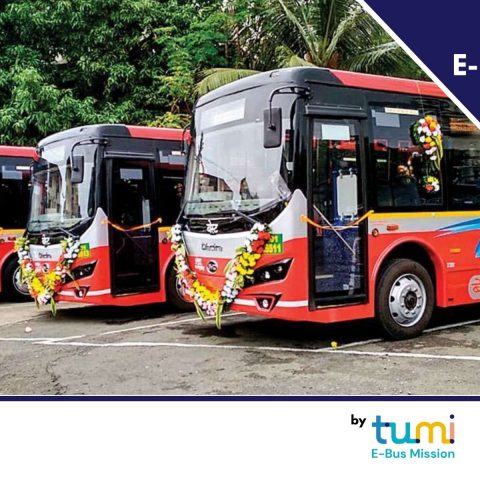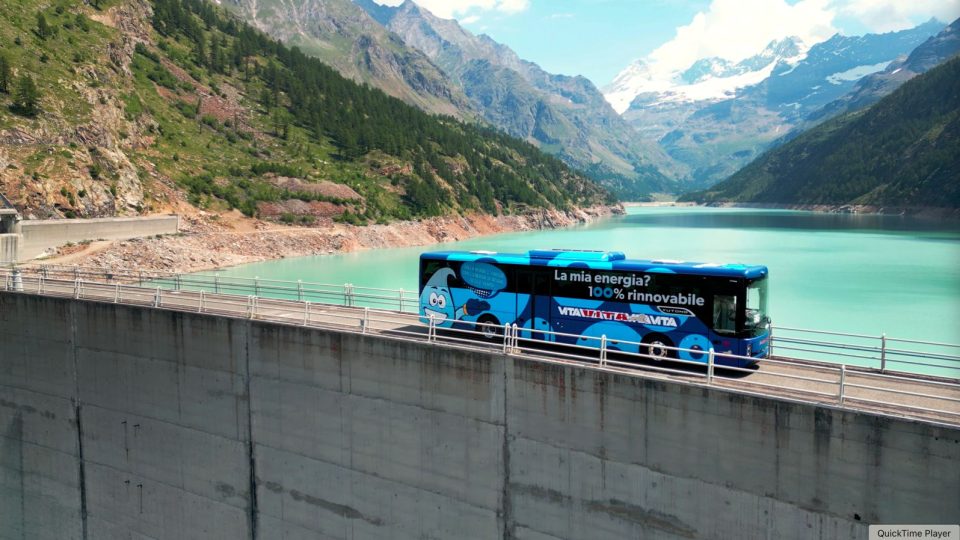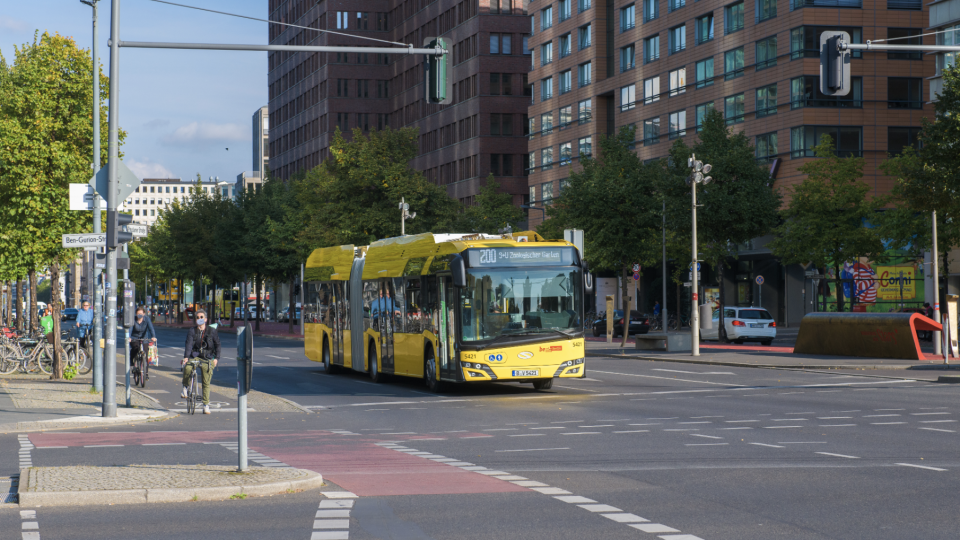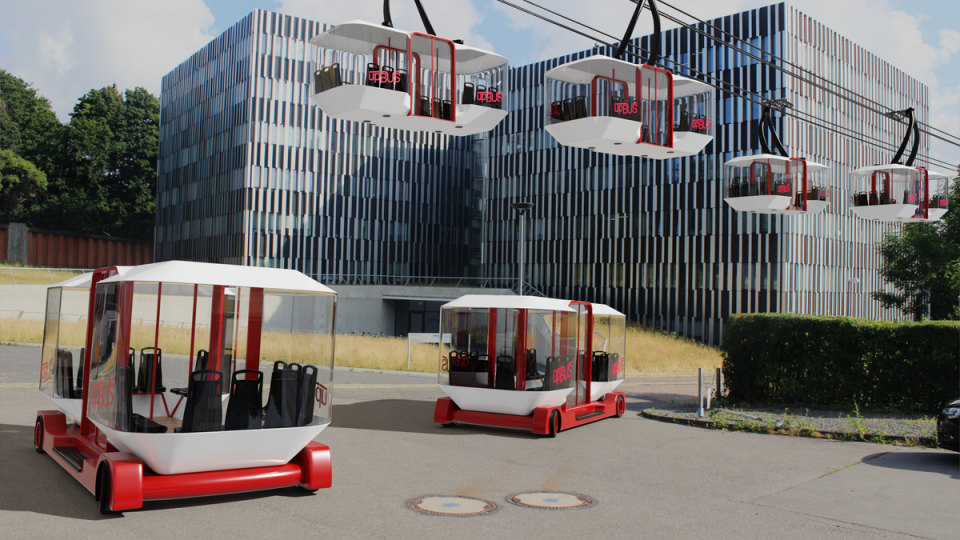The Grand Challenge: an aggregated approach to e-bus procurement in India
Below, a contribution fromTUMI – Transformative Urban Mobility Initiative.It’s the fourth of a series of articles focusing on TUMI E-Bus Mission.Funded by the German Ministry for Economic Cooperation and Development (BMZ) and participated by organizations such as C40 Cities, GIZ, ICCT, UITP and WRI,it has the target of accelerating the transition to electric buses in the Global South.Sustainable […]

Below, a contribution from
TUMI – Transformative Urban Mobility Initiative.
It’s the fourth of a series of articles focusing on TUMI E-Bus Mission.
Funded by the German Ministry for Economic Cooperation and Development (BMZ) and participated by organizations such as C40 Cities, GIZ, ICCT, UITP and WRI,
it has the target of accelerating the transition to electric buses in the Global South.
Sustainable Bus is TUMI E-Bus Mission media partner.
Feedbacks, questions and contributions are welcome (at info@sustainable-bus.com).
As the world’s second most populous country, India could benefit greatly from expanding public transport. While broadening accessibility to transportation is an important aspect of responding to growth in its biggest cities, doing so in a sustainable manner and implementing low emissions solutions is key.
India already registers a remarkably high number of premature deaths[1] due to transportation emissions. The government has recognized thus the need to take care to limit emissions while simultaneously expanding the public transport services. To respond to the immediate need to decarbonize, they have set an electrification aim that will see 30% of passenger autos as EVs along with 100% of buses by 2030, reducing oil consumption by 156 million tonnes. To curb emissions, low emissions e-buses are one of the best solutions, as transport companies can integrate e-buses into their transit fleets gradually while transitioning higher polluting vehicles out. Yet often the initial costs of e-buses can feel prohibitive due to the poor financial health of some transport companies.
To achieve a Level of Service(LoS) 1, the Ministry of Housing and Urban Affairs, Govt. of India has outlined a benchmark of 600 buses[2] per 1 million residents in cities like Chennai, Delhi, and Hyderabad — a level which would require existing fleets to grow, or as in the case of Pune, double in size[3]. Yet the financial straits many companies are facing has led to recent procurement mostly selecting diesel or CNG-powered buses instead. In Bengaluru, for example, all 6,521 buses in service in 2018-19 were diesel while in Delhi, the fleet of 3,842 buses runs on CNG. Addressing the economic impact of the e-bus is thus one of the first steps toward a more sustainable transport system; TUMI E-Bus Mission is supporting stakeholders at the national level in finding one.
What is The Grand Challenge?
The Grand Challenge is an initiative led by The Convergence Energy Services Limited (CESL) upon nomination by the Department of Heavy Industries, the apex body for the promotion of Electric Vehicles in India. It was launched under the e-Sawaari: India Electric Bus Coalition[4], a coalition of the federal, state, and city-level government agencies, transit service providers, original equipment manufacturers (OEMs), financing institutions, and ancillary service providers to share knowledge and their learnings on e-bus adoption in India. It is one successful example of how sustainable mass procurement might work — and it’s one worth replicating.
Supporting several cities across India, the TUMI E-Bus Mission supported CESL on an aggregated approach to e-bus procurement in hopes that bulk buying would reduce prices. After convening several meetings with think tanks, transit agencies, members of the private sector and other officials to work out the specifics of procurement, a call for bids was put out.
In January 2022, the Convergence Energy Services Limited (CESL) issued a tender to request the provision of a total of 5,450 e-buses for the cities of Delhi, Calcutta, Surat, Bengaluru, and Hyderabad. While the lot sizes of each city ranged from 150 to 1,500 e-buses each, by combining their purchasing power, the cities were able to secure record low prices based on the large total quantity aggregated. The price difference was 7-48% lower than other bids for e-buses in India received over the last 12-18 months and the tender set a new standard for future pricing in the country.
To meet the standards of the tender, a set of guidelines was laid out to accommodate the varying needs of each city. Transit agencies were deemed responsible for providing operation routes details, schedules, upstream charging infrastructure, parking spaces, and a depot to house at least 75 buses. They likewise handle related maintenance as well they maintain overall responsibility of the project regulator. The ownership and operations of e-buses and related charging infrastructure will be handled by operators. The Grand Challenge set daily running requirements for the buses of 225 km per day or 70,000 km annually. That reduced bid rates for operations tremendously, which worked out to:
- 39.21 ₹ /km for 9m e-buses
- 43.49 ₹/km for 12m low floor e-buses
Or between 48 and 52 cents[5] per kilometer. Costs such as maintenance, charging and capital infrastructure will be fixed over a course of 12 years to provide reliability in planning for both the transit agency and the original equipment manufacturers.
Although the upfront costs of purchasing e-buses may appear higher at first, the per kilometer costs of deploying these e-buses will be significantly lower than the cost of diesel and CNG buses. At the same time, the integration of e-buses will have environmental benefits. Over the course of the 12 years of service life that these e-buses are expected to operate, around 4.71 billion kms will be driven, resulting in a savings of 1.88 billion liters of fossil fuels and a reduction of 3.31 metric tons of CO2 emissions[6].
Leveraging government support as a group
Combining resources for the bidding process is just one aspect of the Grand Challenge which proves that working as a collective can benefit individual cities. As each transit agency works to integrate the e-bus into their transit fleet, they now have a wealth of knowledge on hand to exchange ideas and lessons learned as the process of implementation advances. Likewise, they can gather and consolidate data related to operations to develop best practices for the development of the e-bus ecosystem.
The Faster Adoption and Manufacturing of Electric Vehicles in India (FAME) Scheme, administered by the Department of Heavy Industries, initially served to inspire investment by the government in the Grand Challenge. The DHI, which provides subsidies and support for the purchase of e-buses, further announced the plan to tender e-bus deployment in nine Indian cities with populations over four million through demand aggregation — leading to the Grand Challenge. At the same time, the Grand Challenge encouraged cities to explore further subsidy opportunities by providing a discount of 0.25 ₹/100k km as viability gap funding.
The success of such initiatives, along with the progress made via the Grand Challenge, has inspired further consideration of consolidated procurement in the country and CESL is aiming to procure a further 50,000[7] E-buses in the next five years. This will be especially useful in smaller cities around India, which are more likely to be hit by increasing pollution as high emissions vehicles grow in numbers. An initial analysis of smaller cities by the World Resources Institute India sees the possibility of procuring between 13,500 and 22,500 buses in the coming years. The National Investment Program for Bus-based Public Transport envisions even greater numbers, estimating around 73,000[8] electric buses to be purchased by 2031. And with fuel prices on the rise, there’s no better time for deploying the e-bus than now.
[1] Majority of air pollution deaths in India linked to diesel vehicle emissions: Study – The Economic Times (indiatimes.com)
[2] https://www.itdp.org/wp-content/uploads/2022/05/Rollout-of-Electric-Buses-in-India_Vaishali-Singh.pptx.pdf
[3] ITDP report on Rollout of Electric Buses in India https://www.itdp.org/wp-content/uploads/2022/05/Rollout-of-Electric-Buses-in-India_Vaishali-Singh.pptx.pdf
[4] Launch of E-sawaari India Electric Bus Coalition – NITI Aayog on Twitter: “#NITIAayog launched e-Sawaari: India Electric Bus Coalition in partnership with @ConvergenceCESL and @WorldResources, with support from @TUMInitiative. #eSawaari #electricbus #FutureofMobility https://t.co/gv45rh270b” / Twitter
[5] USD, at an exchange rate of 1 INR to 0.0125598 USD
[6] https://www.pib.gov.in/PressReleasePage.aspx?PRID=1820225
[7] https://www.convergence.co.in/public/upload/home_banner/fge3xbp76oark9fy1l.pdf
[8] National Investment Program for Bus-based Public Transport Systems in India – Shakti Sustainable Energy Foundation (shaktifoundation.in)









